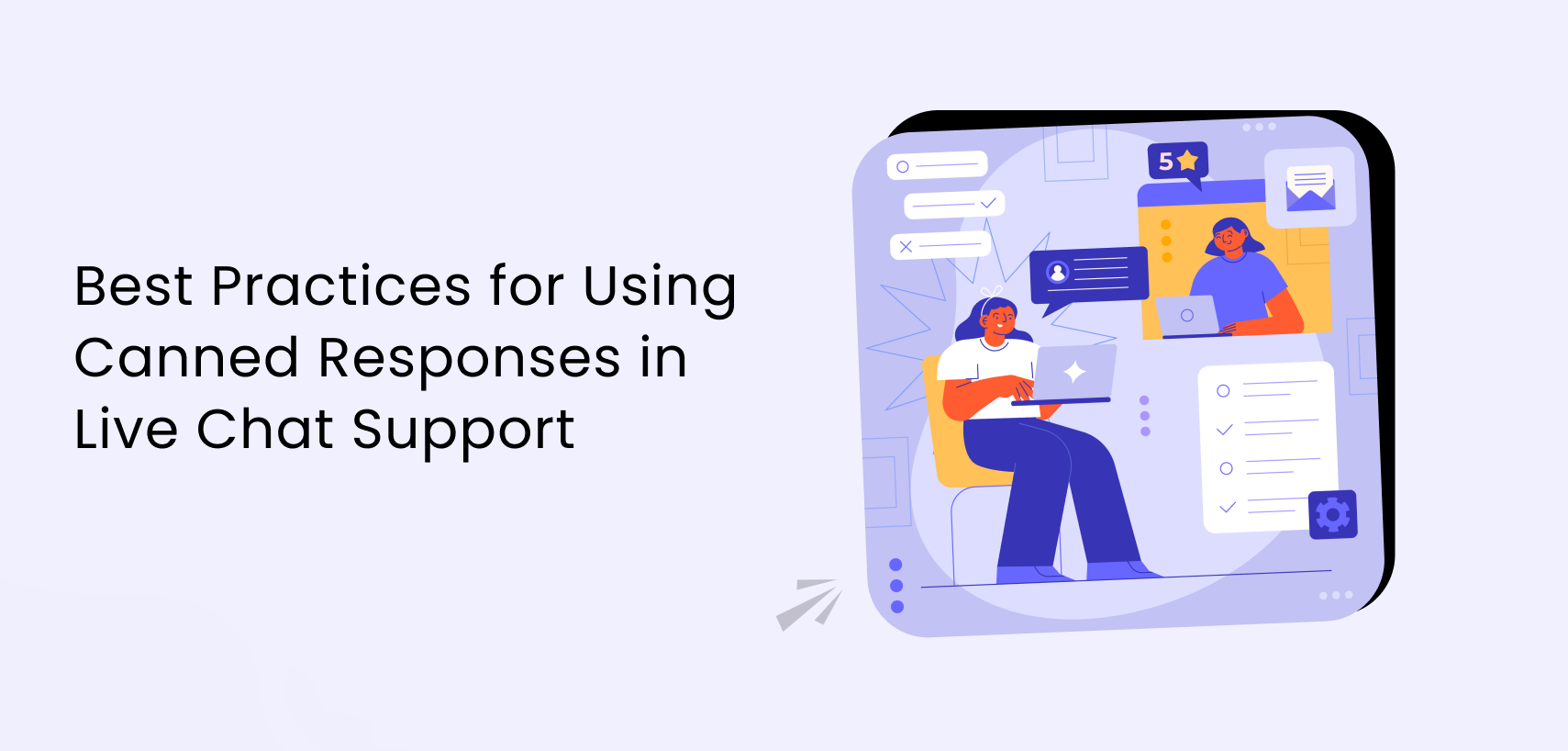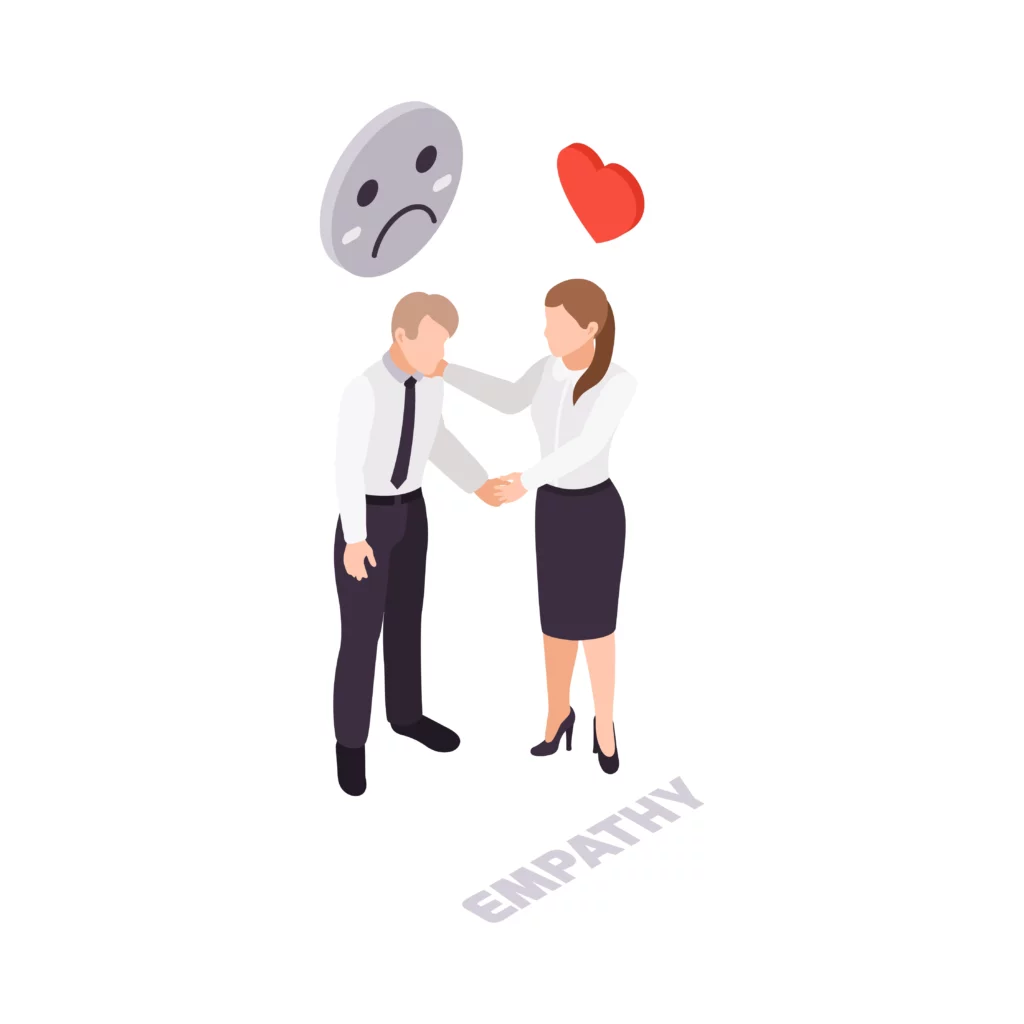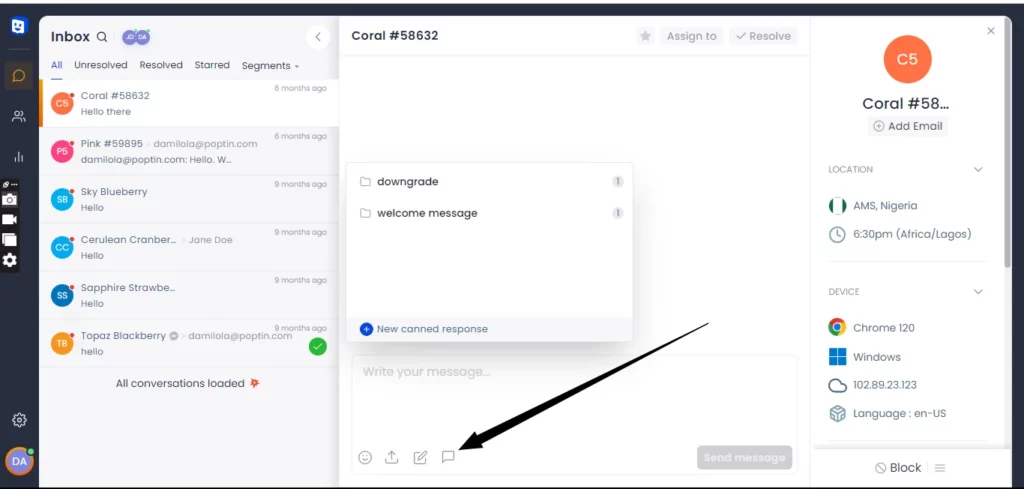
Live Chat,Support - 6 Mins READ
Consider These Chaport Alternatives for Better Customer Support in 2024
Damilola Oyetunji
Content Writer at Chatway.
Quickly respond to customer and visitor inquiries via live chat
Personalize the chat widget to match your business's style and branding
Stay updated on all incoming messages with email and push notifications
Improve the way your team works with chat assignments and private notes
Provide support on the go with Chatway's mobile apps for iOS and Android devices
Categorize and label conversations using specific criteria for personalized support
Interact with visitors in their preferred language, supporting 20+ languages
Use Chatway live chat on multiple platforms such as Shopify, Wix, Duda etc
Get insights into your support activities to better understand customer interactions
Centralize chats from Messenger and email into a single dashboard
Create a library of common answers and use them to reply in seconds
Live Chat,Support - 9 Mins READ
Content Writer at Chatway.


Live chat support is a fantastic way to connect with customers in real-time, but let’s be honest – answering the same questions repeatedly can get tedious. That’s where canned responses come in: pre-written snippets that save you time and ensure consistent messaging. However, simply throwing generic responses at customers can backfire. Here’s how to leverage canned responses for a winning live chat experience:
Crafting clear and concise responses is important for effective communication in live chat support. Here are some strategies to ensure your responses hit the mark:
When responding to customers in live chat, it’s essential to focus on the core of their query or concern. Begin by clearly identifying what they are asking or stating, and then proceed to address it directly. This approach shows attentiveness and helps to provide a solution or information efficiently.
In the fast-paced environment of live chat support, brevity is key. Customers appreciate quick answers that get straight to the point. Avoid unnecessary details or lengthy explanations that might confuse or overwhelm the customer. Instead, aim to deliver your message succinctly while ensuring all necessary information is included.
Using clear and easy-to-understand language is paramount in live chat interactions. Steer clear of technical jargon or industry-specific terms that customers may not be familiar with. Imagine you are explaining the solution to someone who is not familiar with your industry – this helps in keeping your responses accessible and understandable.
Before sending your response, take a moment to read it aloud. This practice helps you identify any awkward phrasing or unclear passages. A response that flows naturally when spoken is more likely to be easily comprehended by the customer. If it sounds clear and concise when read aloud, chances are it will be well-received by the customer.
By following these guidelines – addressing the specific question directly, keeping responses brief yet informative, using simple language, and ensuring natural flow – you can craft clear and concise responses that enhance the customer experience during live chat interactions.

Make them feel seen, not screened: A simple “Hi [Customer Name]” goes a long way. It shows you’ve acknowledged them as an individual, not just another chat window.
Mentioning their order number, account type, or the issue they described personalizes the response and shows you’re engaged.
Is the customer using emojis and casual language? Respond in a way that matches their tone while maintaining a professional demeanor. You can still be friendly and helpful without compromising professionalism.
Here are some examples:
By taking a few extra seconds to personalize your canned responses, you’ll create a more welcoming and positive customer experience. It shows you care and builds trust, making them more likely to have a successful interaction and feel valued.
Prioritizing efficiency and accuracy in live chat support is essential for delivering timely and reliable customer service. Here’s how you can achieve this:
Begin by analyzing your chat logs to identify recurring questions or issues that customers frequently raise. These could range from inquiries about product specifications to questions about shipping policies or troubleshooting common technical issues. Once you’ve pinpointed these common themes, create a set of canned responses tailored to address each type of inquiry efficiently.
By having pre-written responses for these frequent queries, support agents can save time and respond promptly without having to draft replies from scratch. This streamlines the workflow and ensures consistency in how these commonly asked questions are answered. Moreover, it allows agents to focus more on resolving complex or unique issues that require personalized attention.
While canned responses offer efficiency, it’s important to regularly review and update them to ensure accuracy. Policies, pricing, and procedures within a company can evolve over time, so it’s essential that the information provided in canned responses remains current and reflects the latest updates.
Before deploying any canned response, take a moment to double-check its accuracy. Verify that the information aligns with the most recent policies or guidelines set by your company. This step not only prevents misinformation but also enhances the credibility of your support team in the eyes of customers.
Incorporating these practices not only enhances the efficiency of your live chat support operations but also ensures that customers receive accurate and up-to-date information consistently. By leveraging data from chat logs to create effective canned responses and maintaining vigilance over their accuracy, businesses can effectively manage customer inquiries while maintaining high standards of service quality. This approach ultimately contributes to improved customer satisfaction and loyalty, reinforcing the reputation of the company as a reliable provider of support.
Maintaining a human touch in live chat support is crucial for fostering positive customer interactions, even when utilizing canned responses. Here are key practices to ensure your responses are empathetic and engaging:
Canned responses are invaluable for their efficiency, but they should never replace genuine interaction. Think of them as a starting point—a structured framework that you can build upon. Begin by addressing the customer’s immediate concern or question using the canned response as a foundation. Then, personalize the interaction by adding relevant details or addressing specific aspects of their inquiry. This approach demonstrates to the customer that their query is being taken seriously and individually addressed.
Even when using canned responses, empathy plays a crucial role in customer satisfaction. Acknowledge the customer’s emotions, whether they are expressing frustration, disappointment, or confusion. Use empathetic language to convey understanding and concern for their experience. For example, phrases like “I understand this must be frustrating for you” or “I’m sorry to hear about your experience” can go a long way in showing empathy.

Customers may have follow-up questions or seek further clarification after receiving a canned response. Be proactive in addressing these queries promptly and comprehensively. Avoid the temptation to rely solely on canned responses for follow-up interactions. Instead, personalize your responses based on the ongoing dialogue and the customer’s evolving needs.
If the situation allows, inject personal touches into your responses beyond the canned message. For instance, referencing previous interactions or specific details the customer has mentioned can make them feel valued and understood. This personalized approach reinforces the human element of your support interactions.
End your interactions on a positive and reassuring note. Thank the customer for reaching out and assure them that you are here to help. For instance, phrases like “Thank you for bringing this to our attention. We’re committed to resolving this for you” or “I appreciate your patience as we work through this together” can leave a lasting positive impression.
Bonus Tip: Regularly Review and Update
Regularly reviewing and updating canned responses is essential to ensure they continue to meet the evolving needs of your customers and align with the current practices of your business. Here’s why this ongoing maintenance is crucial and how to effectively implement it:
Customer feedback serves as a valuable source of insight into the effectiveness of your canned responses. Pay attention to recurring themes or suggestions from customers regarding the clarity, helpfulness, or appropriateness of the canned responses they receive. Use this feedback to identify areas for improvement or adjustment in your canned responses.

For example, if customers frequently express confusion about a particular aspect of your product or service based on the canned responses provided, it may indicate a need to revise or clarify that response. Conversely, positive feedback on the usefulness of certain canned responses can reaffirm their effectiveness and guide you in replicating that success in other areas.
Businesses are dynamic entities that undergo changes in policies, procedures, products, and services over time. It’s crucial that your canned responses reflect these updates accurately. Whether there are new product features to highlight, changes in pricing structures, or updates to customer service protocols, ensure your canned responses are updated accordingly.
For instance, if your company introduces a new return policy or launches a revamped version of a product, adjust the corresponding canned responses to reflect these changes. This proactive approach not only keeps customers well-informed but also demonstrates your commitment to providing accurate and up-to-date information.
Set a schedule for reviewing and updating canned responses on a regular basis. This could be monthly, quarterly, or as needed based on the frequency of changes in your business environment. Assign responsibility to a designated team or individual within your support team to oversee this process.
During these reviews, assess each canned response for accuracy, relevance, and clarity. Consider whether there are new trends or emerging issues that warrant the creation of additional canned responses. Involve relevant stakeholders such as product managers, marketing teams, and customer service representatives in these reviews to ensure comprehensive updates.
Maintain a documented record of changes made to canned responses and establish version control protocols. This helps track when updates were made, who made them, and what specific changes were implemented. Version control also ensures that all team members are using the most current versions of canned responses, minimizing the risk of outdated or inaccurate information being communicated to customers.
By regularly reviewing and updating your canned responses based on customer feedback and internal changes, you can ensure they remain a valuable tool for delivering efficient and accurate support. This proactive approach not only enhances the customer experience by providing timely and relevant information but also supports your overall customer service strategy in meeting the evolving needs of your clientele.
In conclusion, canned responses are valuable tools in live chat support when used thoughtfully and strategically. However, maintaining a balance between efficiency and personalization, helps in delivering exceptional customer experiences while optimizing your support operations.
Implementing these best practices ensures that canned responses contribute positively to customer satisfaction and loyalty, ultimately driving business success in the competitive marketplace.
If you’re wondering where to start or what tool to use. Consider Chatway. It offers a handy feature that lets you create pre-written messages for those frequently asked questions (FAQs) that pop up all the time.

Imagine how much time you can save by having a library of responses ready to go, instead of typing out the same answer every time! Ready to get started? Click here

Live Chat,Support - 6 Mins READ
Content Writer at Chatway.

Content Writer at Chatway.

Content Writer at Chatway.